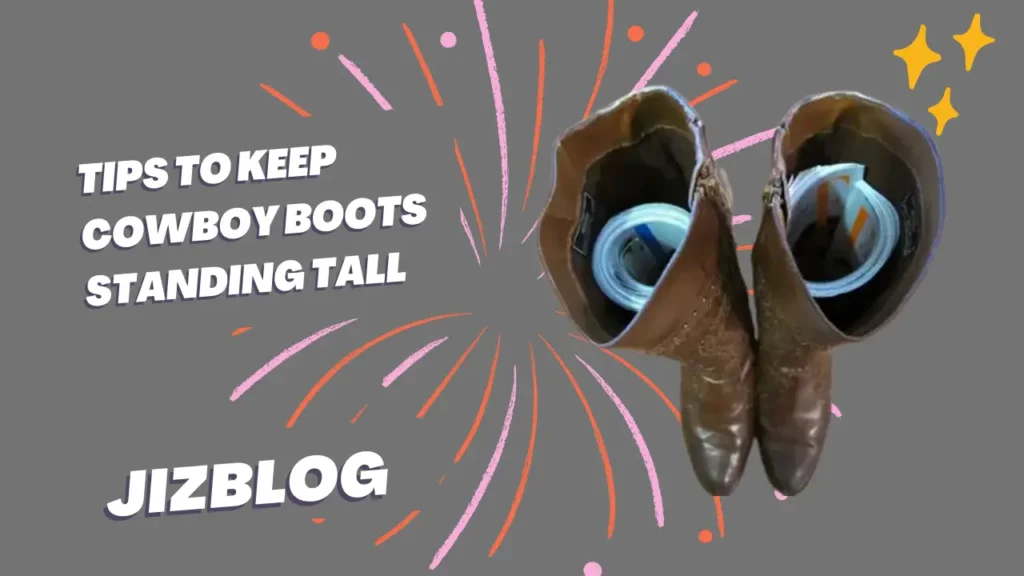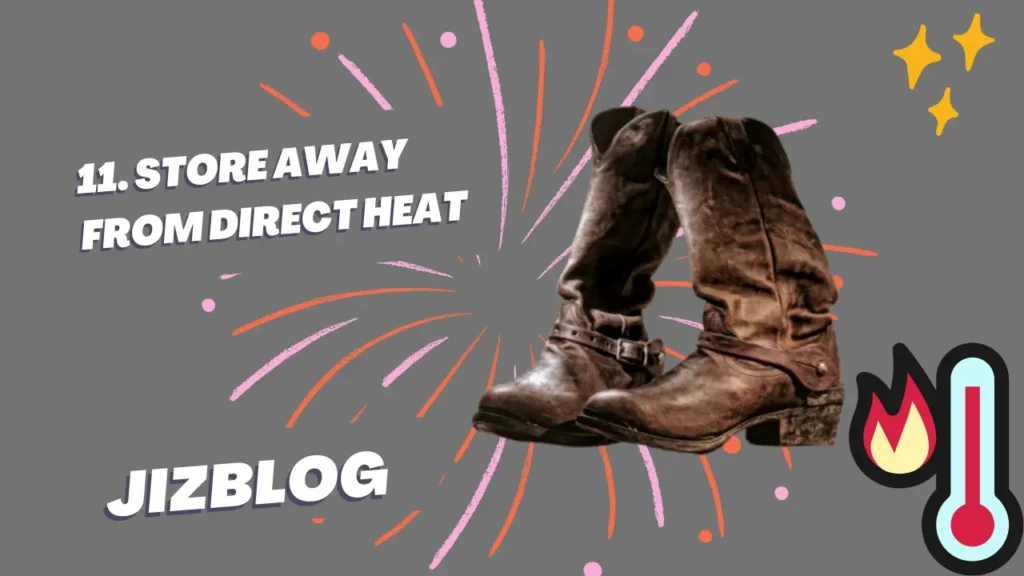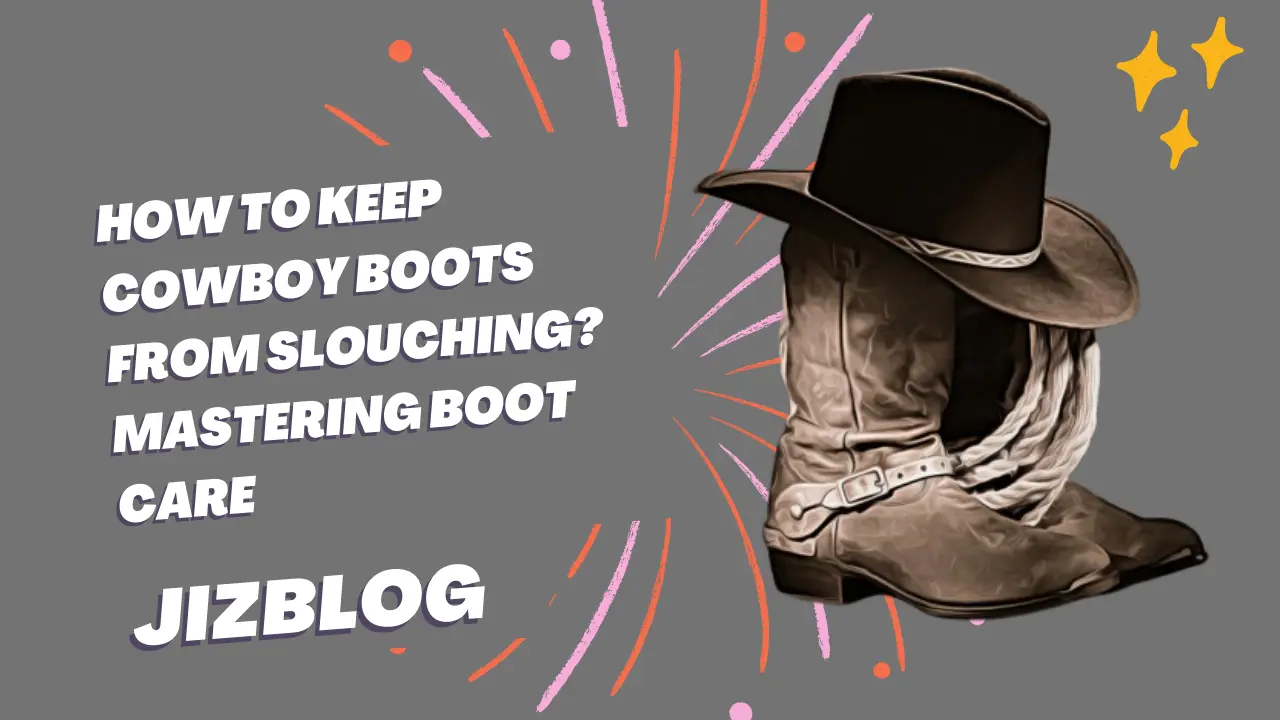I was so excited when I bought my first pair of cowboy boots. I loved the way they looked brand new – nice and structured with a perfect slouch at the ankles. But it didn’t take long before they stretched out and started slouching far too much, losing that iconic cowboy boot silhouette. No matter how often I stuffed them with socks and left the boot shapers in, they continued to lose their shape overnight. Finally, I discovered a nifty trick to stop my cowboy boots from over-slouching. Now my boots keep their structure while remaining comfortable for all-day wear. Keep reading and I’ll share how to easily keep cowboy boots from slouching too much using just a household item or two.
Causes of Boot Slouching
Before jumping into solutions, let’s review what leads to boot slouching in the first place. Here are the main culprits:
- Loose-fitting shafts – If cowboy boots are too big around the calves, gravity will naturally pull the shafts down. This leads to folds and creases which can be difficult to smooth out.
- Gravity – Even properly fitted cowboy boots will slouch due to the weight of the leather and the effects of gravity over time.
- Storage position – If cowboy boots are placed laterally on their sides during storage, the shaft will buckle under its own weight. Storing boots standing upright is ideal.
- Flexible leather – Cowboy boots are usually made of supple, pliable leather. While this improves comfort, flexible materials are more prone to slouching.
Now that we know why slouching happens, let’s explore some solutions.
Tips to Keep Cowboy Boots Standing Tall

1. Invest in Boot Trees
Boot trees are specially designed inserts that slide snugly into the shaft of the boot to hold its shape. They are the gold standard solution to prevent slouching. Boot trees are traditionally made of wood, but you can also find them in lightweight plastic. For best results, choose a boot tree that fits your specific shoe size and calf circumference. Keep the trees in your boots anytime they’re not being worn. The gentle outward pressure will maintain the boots’ structure and prevent folds. While boot trees are an added expense, they’re a wise investment to extend the life of quality cowboy boots.
2. Use DIY Stuffing
If you don’t want to buy dedicated boot trees, never fear. You can also stuff your shafts with household items to keep them upright. Some crafty solutions include:
- Folded washcloths or small towels
- Plastic grocery bags stuffed with additional padding
- Foam hair rollers wrapped in fabric
- Crumpled balls of newspaper or packing paper
Be creative and use what you have on hand! Just be careful not to overstuff. You want gentle, even pressure against the inner walls. Don’t distort the true shape. Rotate the stuffing periodically so the boots hold their form.
3. Try Specialty Boot Shapers
In addition to traditional boot trees, there are also specialty boot shapers designed to prevent slouching and creases. Options include:
- Inflatable boot shapers that pump air into the shafts
- Foam cylinders or cones to insert into boots
- Flexible plastic with adjustable heights and diameters
- Collapsible metal tubes to expand snugly into the shaft
Specialty shapes are usually more affordable than real wood or cedar boot trees. Try a few to see which type you prefer.
4. Store Boots Upright
Gravity is a slouching shoe’s worst enemy. Whenever possible, store cowboy boots in a vertical position. This could mean displaying them on a boot rack or secure shelving. For storage inside a box or chest, stuff the boots so they don’t topple over. You can also buy vertical boot bags that feature individual compartments to keep pairs upright. Storing boots laterally on their sides is an open invitation for sagging shafts and wrinkles!
5. Consider Boot Stretches and Fillers
If your cowboy boots are a bit loose in the shaft, you may benefit from boot stretches or fillers. Boot stretches are rubber bands that wrap around the top opening of the shaft to gently tighten it. Boot fillers are padded inserts that take up volume in the empty calf space. Both options prevent the shaft from buckling while keeping boots snug on your legs. Just don’t over-stretch or overstuff, as this can damage the boot over time.
Table: Common Materials for Cowboy Boots
| Material | Properties | Care Tips |
|---|---|---|
| Leather | – Supple and durable – Develops patina over time – Prone to cracking if over-dried | – Use boot trees and shapers – Apply leather conditioner – Waterproof to prevent moisture damage – Store away from direct heat |
| Suede | – Soft-napped finish – Prone to water stains – Easily scuffed | – Use gentle brushing motion when cleaning – Avoid applying polishes or waxes – Use suede protector spray |
| Exotic (ostrich, lizard, crocodile) | – Expensive and luxurious – Intricate scales and textures – Requires specialized care | – Research care tips for specific leather – Use clean cloths to wipe shafts – Test products on small hidden areas first |
6. Waterproof Properly
Moisture is damaging for any leather material. When cowboy boots get wet, the saturated leather becomes more flexible and prone to slouching. Use a waterproofing spray to seal and protect the surface. Always let boots fully air dry before using shapers or returning to storage. The moisture needs to dissipate fully so the leather regains its form. Never store wet boots!
7. Maintain Structure with Polish and Conditioner
Regular polishing and conditioning preserves suppleness while retaining structure. The wax-based products coat the exterior leather fibers to prevent excess moisture penetration. Use polish in coordinating cream tones to minimize scuffs and scratches. Follow up with a colorless conditioner to keep leather flexible without too much stretch. Healthy, conditioned leather will better hold its shapely cowboy form.
8. Be Cautious with Alternative Materials
The above tips work great for smooth leather cowboy boots. But alternative materials like suede, ostrich, crocodile, or lizard skin may require some adjustments. Suede is delicate, so avoid using polish or heavy waxes that may stain the nap or texture. Stuff suede boots gently to avoid rips. For exotic leathers, research the best care practices. Oils and conditioners that benefit cowhide could potentially dry out or discolor the surface. Always test products on small hidden areas first. Check that shapers and trees don’t rub off scales or markings. With extra care, these special leather cowboy boots will strut in style.
9. Wear Boots Regularly
While it may sound counterintuitive, wearing your cowboy boots helps minimize slouching during storage. Regular wear allows the shaft to flex and move naturally. Leather remains supple yet retains its original form better. So don’t save your fancy cowboy boots just for special occasions. Work them into your weekly wardrobe rotation so they keep their structure. Just be sure to rest the leather with trees or shapers between wears.
10. Seek Professional Help if Needed
If you notice significant sagging, wrinkling, or misshapen shafts, it may be time to seek professional help. Look for local boot repair shops that offer boot stretching and reshaping services. Experts have tools like boot jacks, steaming, and stretching forms to smooth and reform leather. Don’t take DIY stretching too far or you may end up damaging the boot. Professionals can evaluate if construction has been compromised and when it’s time to retire a worn-out pair.
11. Store Away from Direct Heat

Leather is sensitive to environmental conditions. Storing cowboy boots near direct heat sources can dry out and degrade the material faster. The excessive warmth makes leather suppler and more prone to slouching. Keep boots in a climate-controlled room away from extreme temperatures or humidity fluctuations. Heat can also cause glues and adhesives to soften and come unbonded. Avoid ruining your cowboy boots with inadvertent heat exposure.
12. Break in Boots Gradually
Brand-new cowboy boots will hold their shape better when broken in slowly over multiple wears. Don’t wear them for full days right away. Introduce them for short intervals, with shapers or trees reinforcing the structure between wears. As leather molds to your feet, it will crease and bend naturally. Rushing this process can lead to unsightly sagging later on. Be patient. Properly seasoned cowboy boots flex with your feet but still stand tall.
The Last Words
In conclusion, mastering the art of how to keep cowboy boots from slouching is pivotal in maintaining the enduring allure of this iconic footwear. With a range of practical strategies, from boot trees to DIY stuffing, proper storage, and regular maintenance, you can ensure your cowboy boots retain their classic shape. Embracing these methods guarantees that your boots will always exude their timeless charm and stand tall with rugged elegance, ready for any adventure that comes your way.
FAQ’s
Should cowboy boots be stored stuffed or empty?
Stuff them to help maintain structure and prevent slouching.
Can I use shoe trees instead of boot trees?
Shoe trees may work for shorter boots but won't fit tall shafted cowboy boots.
How often should I condition my cowboy boots?
Every few months, or more often if used heavily.
Will plastic boot shapers damage leather over time?
Plastic is fine for temporary use, but long term can dry out leather. Use wood or padded shapers.

